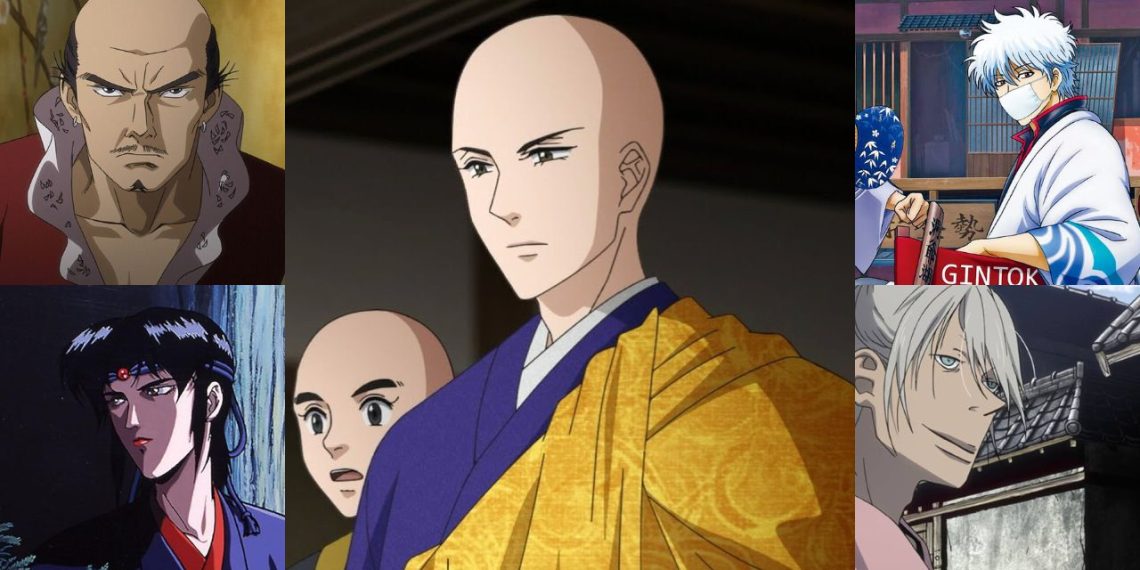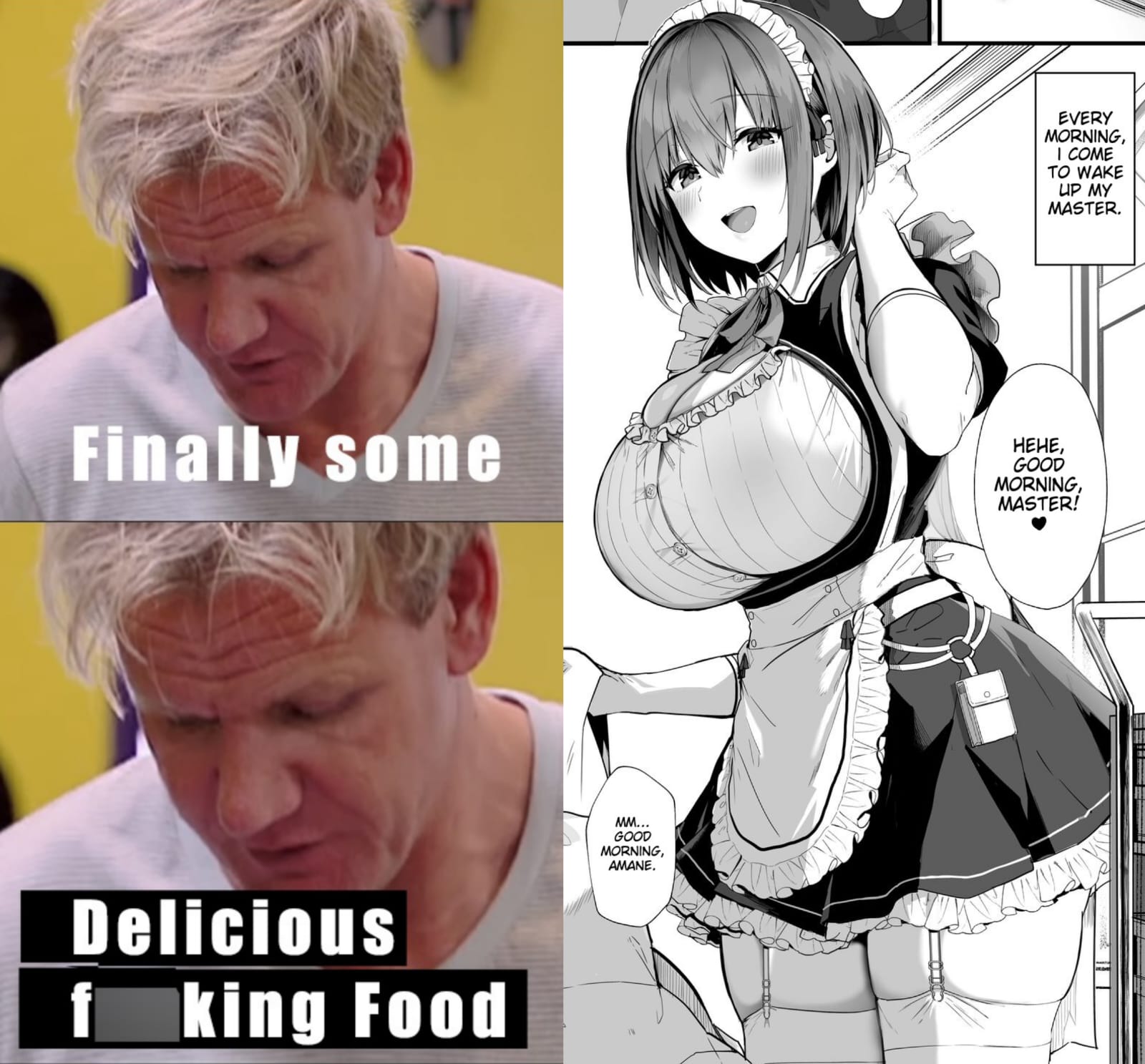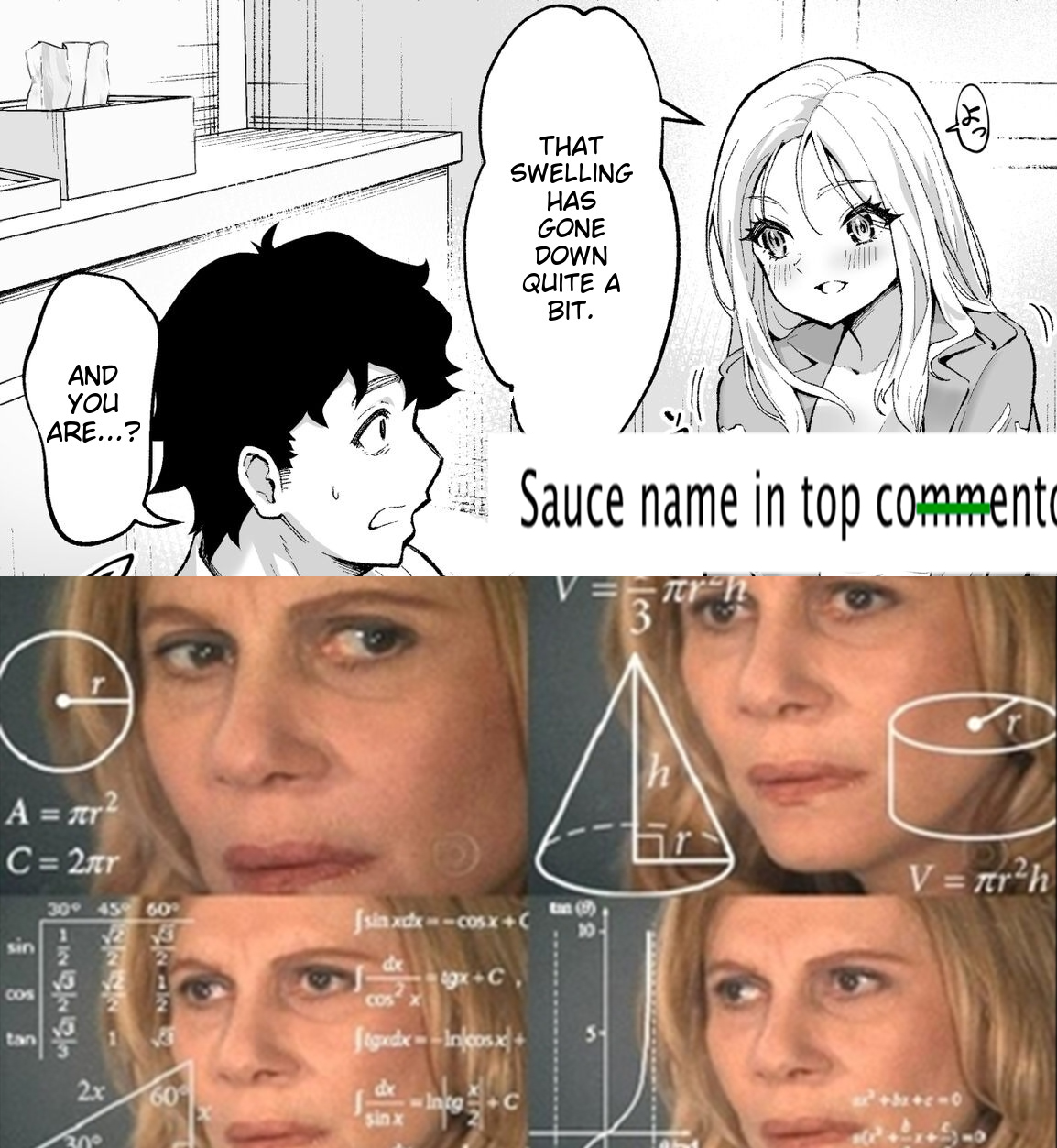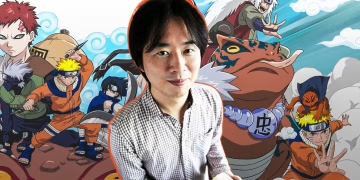Japan, with its deep connection to the samurai, boasts a wide range of anime and manga that explore this beloved profession.
These series often transport viewers to feudal Japan or fantasy worlds inspired by its rich history.
In these stories, skilled swordsmen fight for justice, handle complex political situations, and go on personal journeys of growth.
While many samurai series stick closely to historical settings and traditional depictions of the samurai lifestyle, others take a more creative approach.
These series mix genres and blend samurai elements with other themes, creating unique and imaginative stories that still honor the spirit of the samurai.
This genre’s diversity makes it especially engaging, as there are many different styles and stories to explore.
Whether through faithful historical portrayals or inventive genre fusions, the samurai genre offers something for a wide range of anime fans.
The variety within the samurai genre ensures that there are many options for viewers. Each series offers a different take on the samurai, making it easy for fans to find one that resonates with their interests and tastes.
1) Bleach Is A Timeless Blend of Supernatural Adventure and Samurai Tradition
Bleach stands out as one of the longest and most cherished anime series ever created. It gained fame for blending supernatural elements, fantasy horror, and samurai traditions.
Airing from October 5, 2004, to March 27, 2012, it amazed audiences throughout its eight-year run.
The series is a classic example of shounen anime, following a main character who trains to become a Soul Reaper.
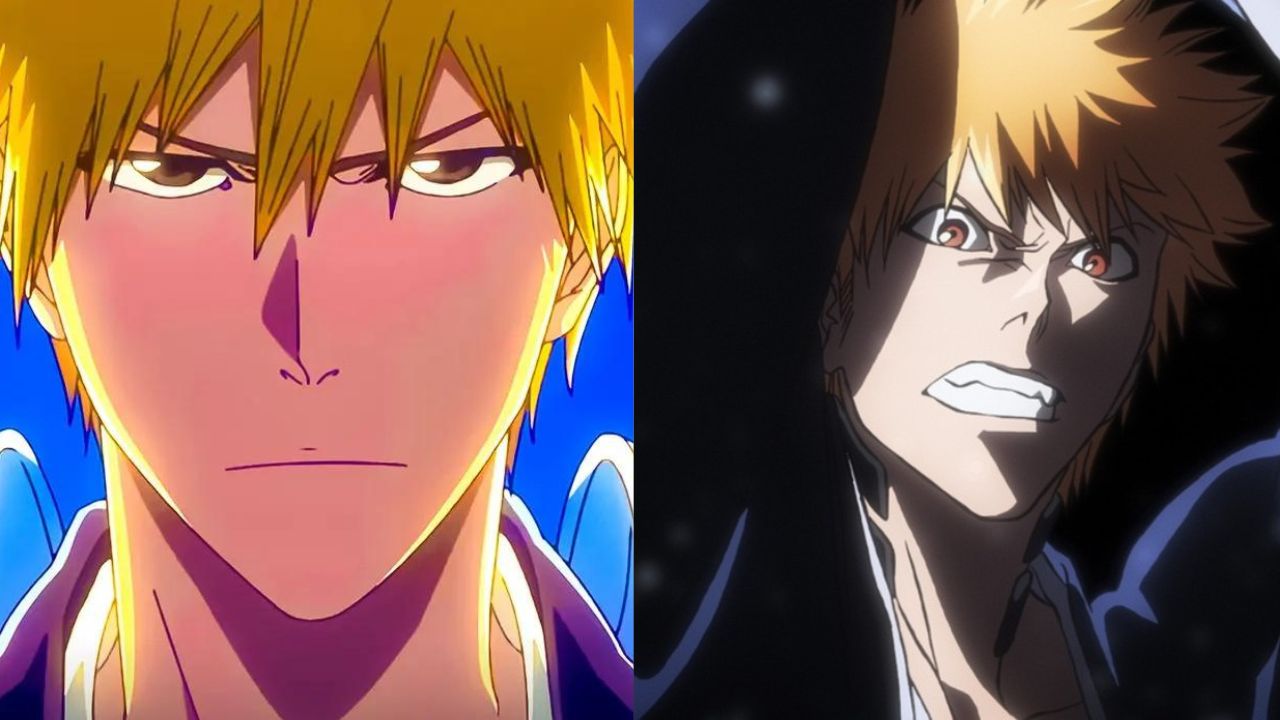
His mission is essential because the world faces a threat from Hollows corrupted spirits that seek to devour human souls.
As the protagonist fights these Hollows, he encounters even greater challenges and uncovers more serious dangers.
The success of Bleach also led to several movies and OVAs, which further expand the story beyond the original series.
2) Samurai Champloo A Bold Fusion of History and Hip-Hop
Samurai Champloo offers a unique blend of historical and modern elements, making it a standout in anime about Japan’s transition from feudalism to industrialization.
Created by Shinichirō Watanabe, the same mind behind*Cowboy Bebop, the series features a blend of realistic animation for serious moments and stylized visuals for dynamic action scenes.
The story begins with a teenage girl named Fuu, who works at her aunt and uncle’s restaurant. Her life takes a dramatic turn when the restaurant is destroyed by fire.
With her home gone, Fuu becomes determined to find her long-lost father, a mysterious samurai known for smelling like sunflowers.
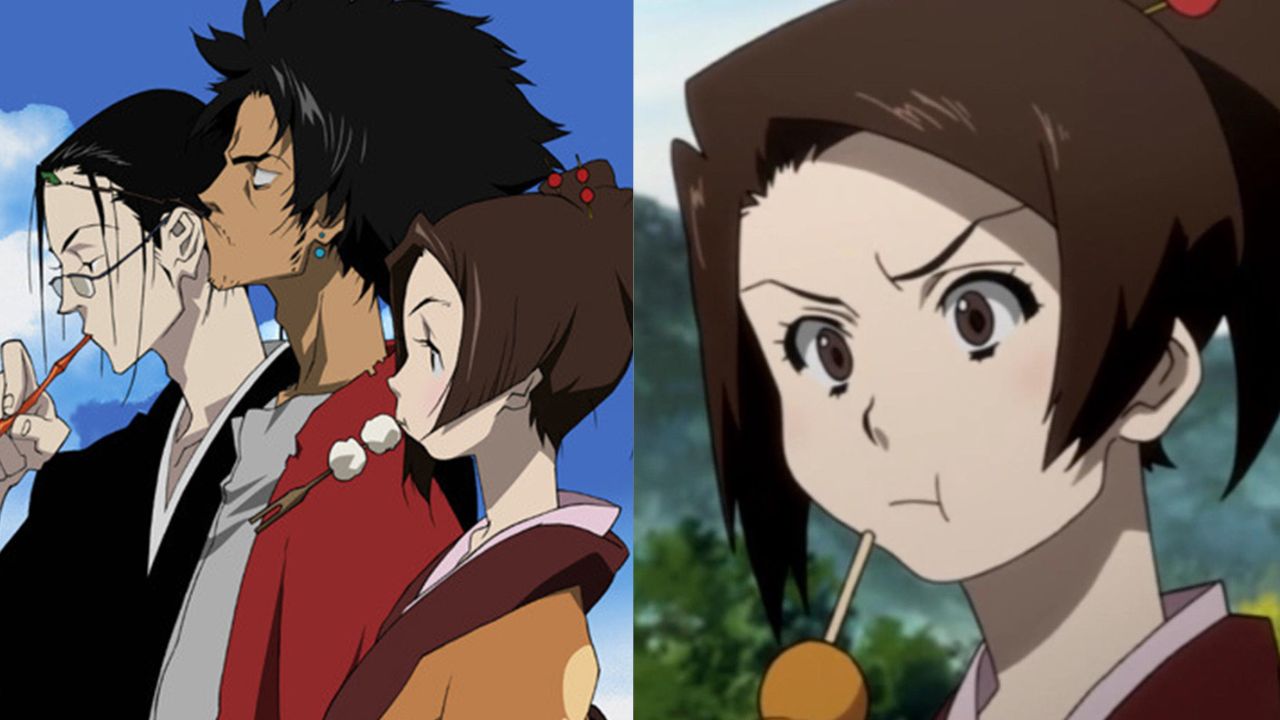
Fuu sets out on her quest and encounters two wandering samurai, Jinn and Mugen, who come from very different backgrounds.
Despite their initial reluctance and skepticism about the peculiar clue that her father smells like sunflowers, they agree to help her on her journey.
As the story unfolds, the trio’s adventures and interactions provide both action-packed scenes and moments of personal growth, blending historical setting with an anachronistic flair.
3) Dororo Is Mappa’s Bold Fusion of Samurai Lore and Supernatural Drama
Dororo is an anime that significantly contributed to Mappa’s rise in the industry. This series is a modern remake of Osamu Tezuka’s manga, blending supernatural elements with traditional samurai themes.
Despite its graphic and violent nature, the story highlights a deep and touching journey of friendship and companionship.
The anime is set in a world where demons play a central role. It tells the story of Hyakkimaru, a young samurai who was cursed at birth.
His father made a pact with demons, resulting in the loss of Hyakkimaru’s body parts. As a result, he is equipped with prosthetic limbs.
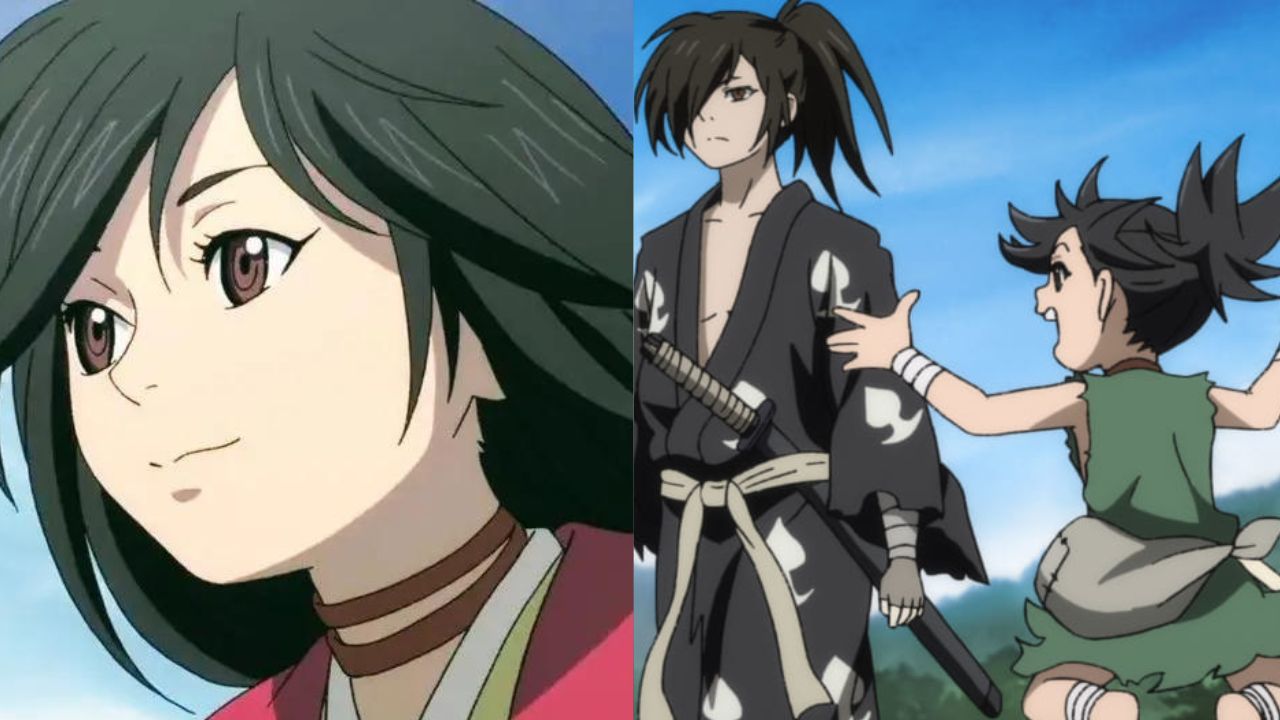
Hyakkimaru’s mission is to hunt down these demons to regain his stolen body parts. He is not alone in this quest; he is accompanied by Dororo, a young orphan with their own backstory.
They confront the demons and face intense challenges along the way. The action scenes in Dororo are intense and well-choreographed, featuring dramatic battles that are both bloody and gripping.
Through this violent struggle, the anime weaves a story about the strength of friendship and the pursuit of redemption.
4) Gintama The Samurai Comedy That Defends Earth from Aliens
Gintama is a highly popular and critically acclaimed samurai anime that stands out for its unique and imaginative setting.
The series is set in an alternate version of Japan’s Edo Period, where samurai protect Earth from invading aliens. This creative twist blends historical elements with sci-fi and action.
The original series aired from 2006 to 2010 and is known for its episodic nature, meaning each episode often tells a different story.
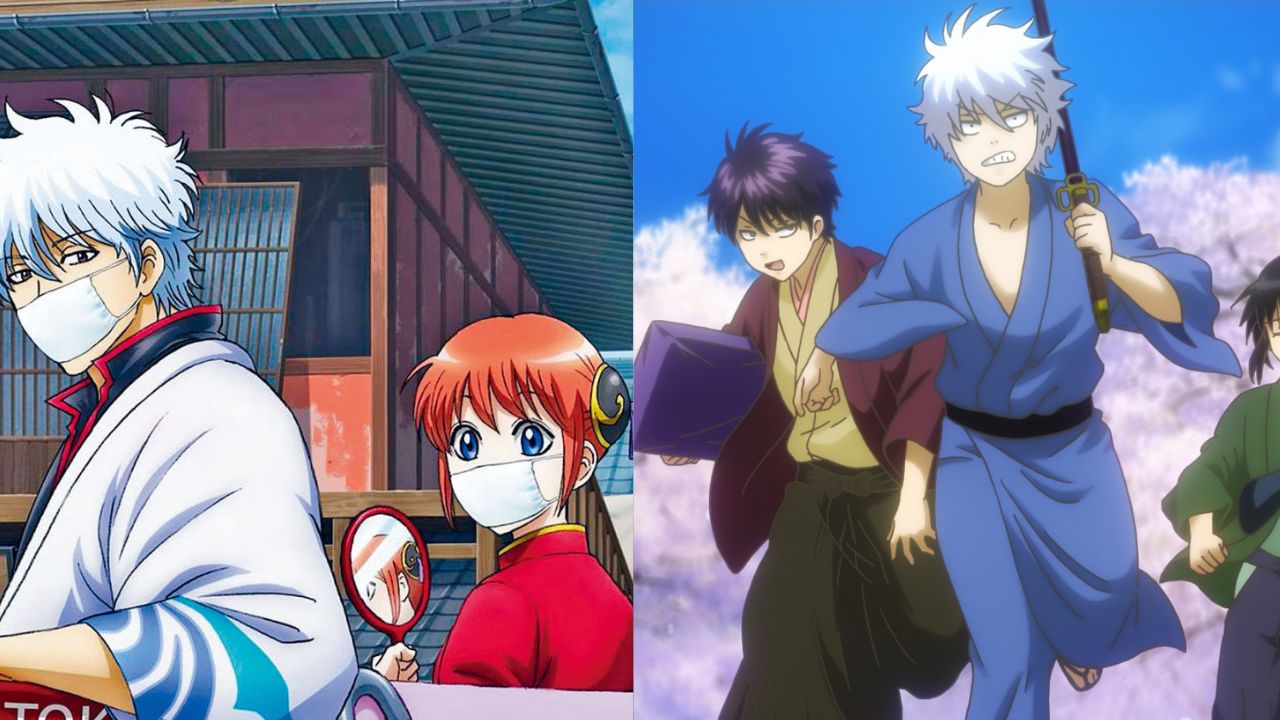
There are various adaptations and versions of the Gintama manga, but this description refers to the specific anime series from that time.
The main character is Gintoki Sakata, a freelance samurai with a laid-back attitude. He is later joined by two companions: Kagura, a powerful alien teenager, and Shinpachi Shimura, who is deeply grateful to Gintoki for rescuing his sister from a dangerous situation.
Gintama is well-regarded for its clever mix of comedy, social satire, and intense drama. The series often juxtaposes humorous moments with serious plotlines, making it a versatile anime that appeals to a wide range of viewers.
5) Rurouni Kenshin The Legendary Anime That Transcended to Live-Action Success
Rurouni Kenshin, also known as Samurai X, is possibly the most famous samurai anime ever made. It is based on a popular manga called Rurouni Kenshin: Meiji Swordsman Romantic Story.
The anime’s success has even led to a well-received live-action movie series, which is rare for anime adaptations.
The story is set during Japan’s Meiji Era and follows Kenshin, a former samurai who has renounced violence and become a pacifist.
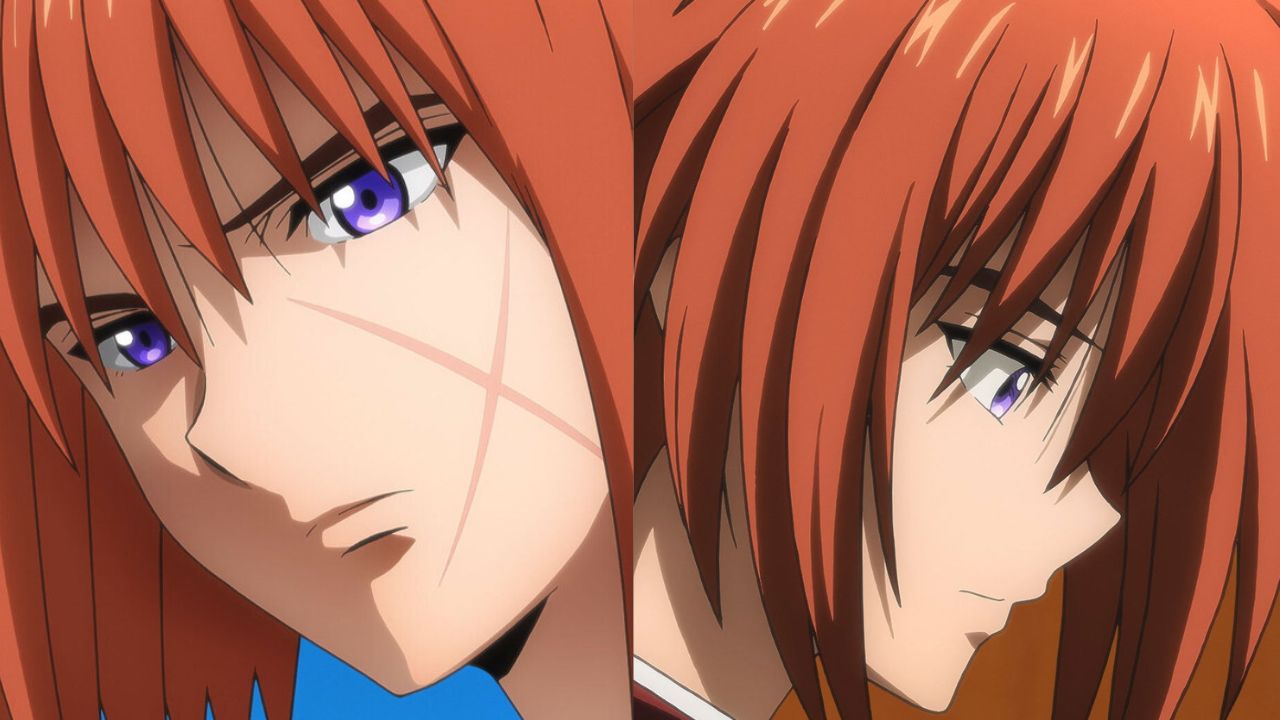
Despite his past as a skilled warrior, he now seeks to protect people without fighting. This change is symbolized by his unique katana, which has a reversed blade, making it a key part of his character.
Kenshin’s journey in the anime highlights his struggle to atone for his past deeds while facing new challenges.
The reversed blade katana becomes a signature item, representing his commitment to peace and his unique approach to protecting others.
6) Afro-Samurai Is A Gritty Blend of Tradition and Futurism
Afro-Samurai is a striking and gritty series set in a unique world that mixes medieval Japan with futuristic elements like motorcycles and robots.
Samuel L. Jackson not only voices the main character, Afro, but also takes on several other roles and played a significant part in the production.
The series aired as a miniseries with five episodes between 2004 and 2005. The story follows Afro, a samurai driven by a deep desire for revenge.
His quest is to find and defeat the person who holds the Number 1 headband, a powerful symbol of status that was taken by killing his father.
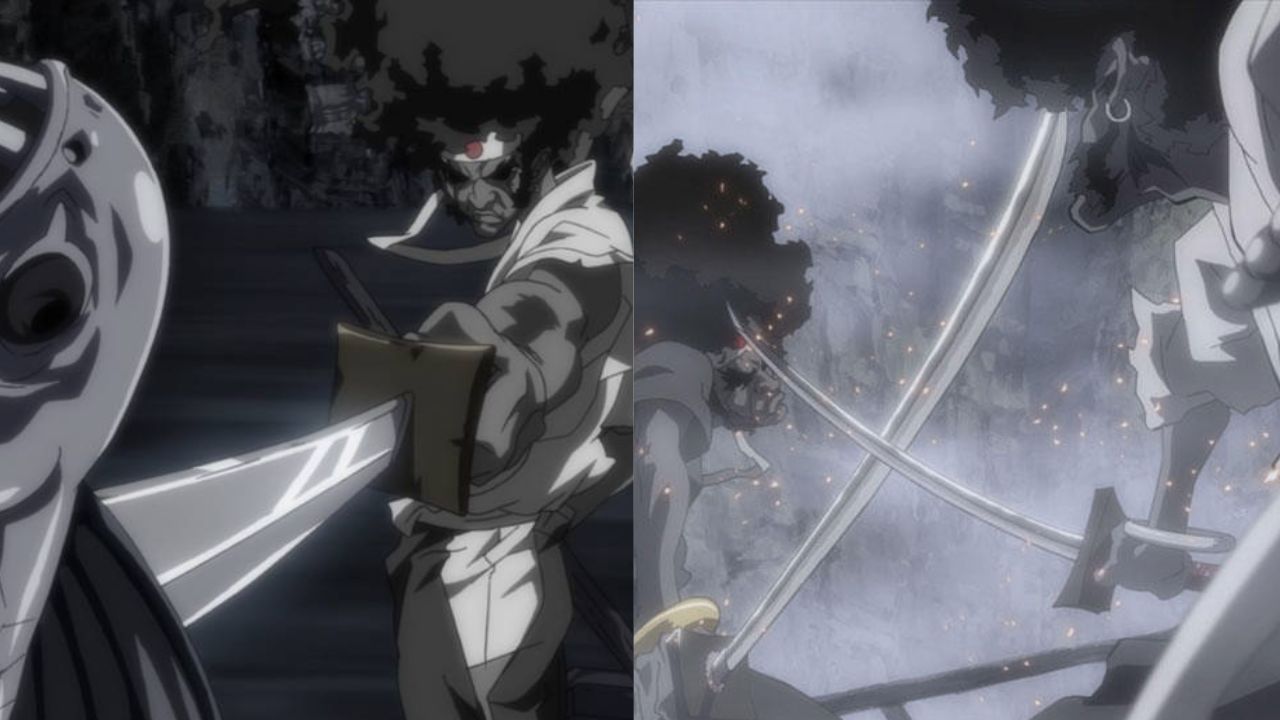
To reach this goal, Afro first claim the Number 2 headband, which involves a journey filled with violence and challenges.
Afro-Samurai is known for its intense action and distinctive style, blending traditional samurai themes with a sci-fi twist.
The series is appreciated for its unique artistic approach and the dramatic depth of its characters.
In 2009, a sequel movie called Samurai Resurrection was released, continuing the story of Afro Samurai.
This full-length film builds on the miniseries, offering fans more of the dramatic and action-packed saga that began with the original episodes.
7) Sword of the Stranger Reveals About Honor and Identity
Sword of the Stranger is a standalone anime film released in 2007, set in a fictional version of Japan’s historical past.
The plot centers on a boy named Kotaro who, along with his dog Tobimaru, is chased by a group of relentless Western marauders. His only help comes from a mysterious samurai known as Nanashi.
Nanashi, despite being a skilled warrior, faces a unique challenge: he is forbidden from drawing his sword, which complicates his role as a protector.
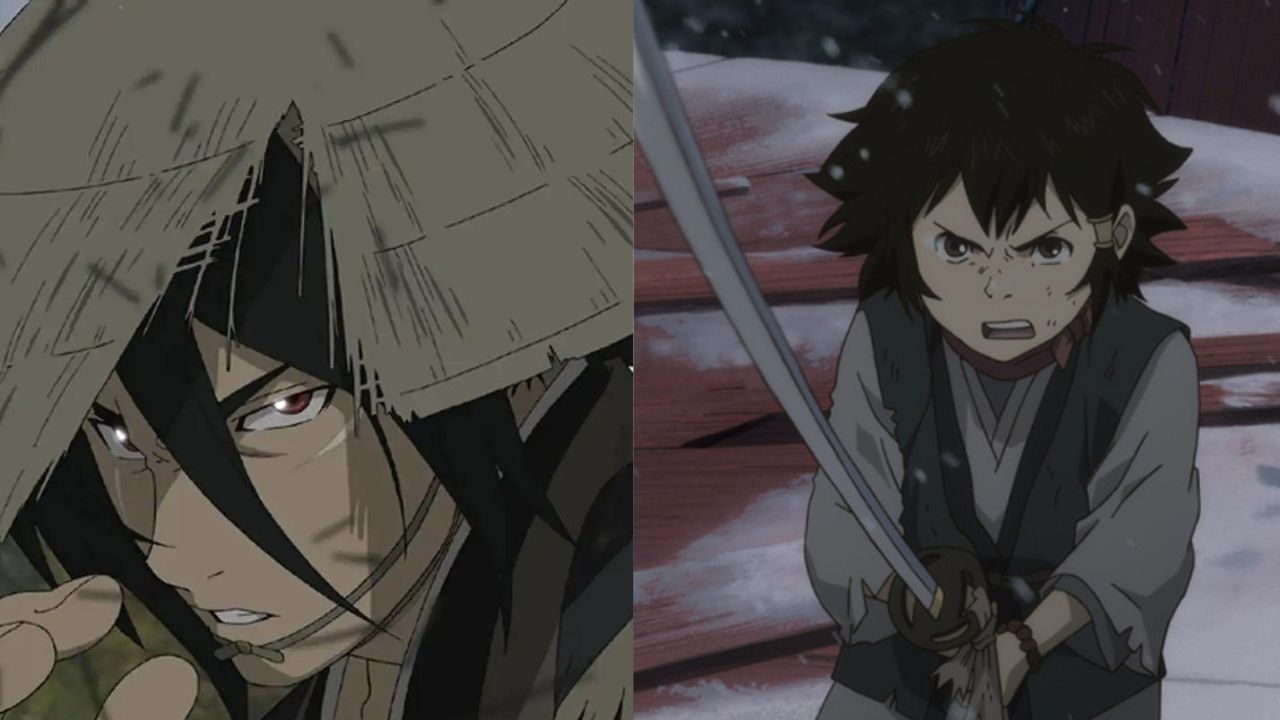
As the story unfolds, both Kotaro and Nanashi’s hidden pasts are slowly revealed, shedding light on why Kotaro is being hunted and who Nanashi truly is.
The film incorporates elements of political and social intrigue, adding depth to the story and preventing it from becoming a predictable action story.
The evolving plot keeps viewers engaged with its twists and character development.
8) Basilisk: Kouga Ninpou Chou a Tale of Rivalry and Romance Among Ninja
Basilisk is set during the Tokugawa Shogunate and focuses on the conflict between two rival ninja clans.
The story unfolds in a time when the samurai’s rule and their covert allies shape the events.
Unlike a typical TV series, Basilisk is more like a miniseries that dives into the intense rivalry and shifting loyalties between these clans.
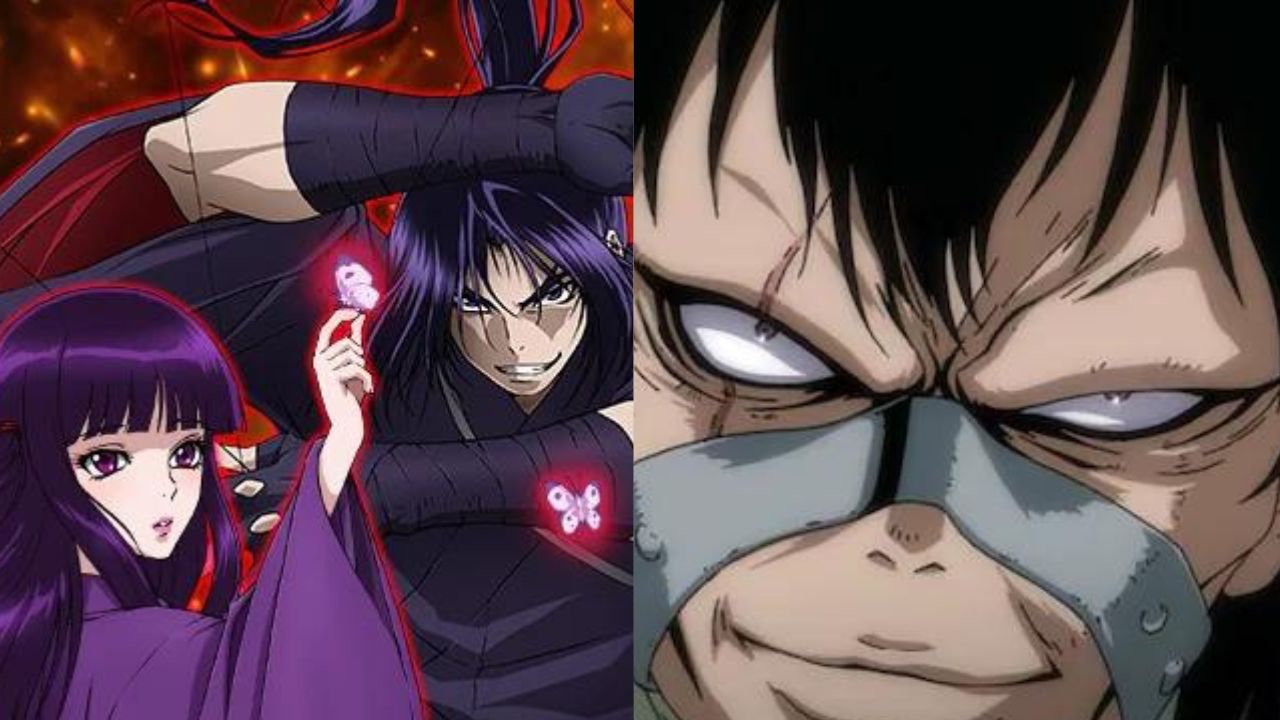
The central figures are Gennosuke Kouga and Oboro Iga, whose clans have been enemies for many years.
They hope to end the feud by marrying each other, but their plans are thwarted when a new war breaks out.
The conflict grows so severe that it even draws in the Shogun. Ultimately, Gennosuke and Oboro set aside their personal feelings and confront the destiny of their clans.
Their choices will determine the future of both families and the resolution of their long-standing struggle.
9) Sengoku Basara: Samurai Kings Is A Bold Fusion of History and Fantasy
For those who love samurai anime, Sengoku Basara: Samurai Kings is a standout choice, especially for fans of the Sengoku Period in Japan.
This era was marked by constant warfare and significant social changes, creating a dramatic backdrop for the story.
Unlike many other anime, which are adapted from manga, Sengoku Basara is based on a video game by Capcom, specifically Sengoku Basara: Samurai Heroes.
This unique origin sets it apart, offering a fresh take on the samurai genre. The anime centers around two historic rivals, Date Masamune and Sanada Yukimura.
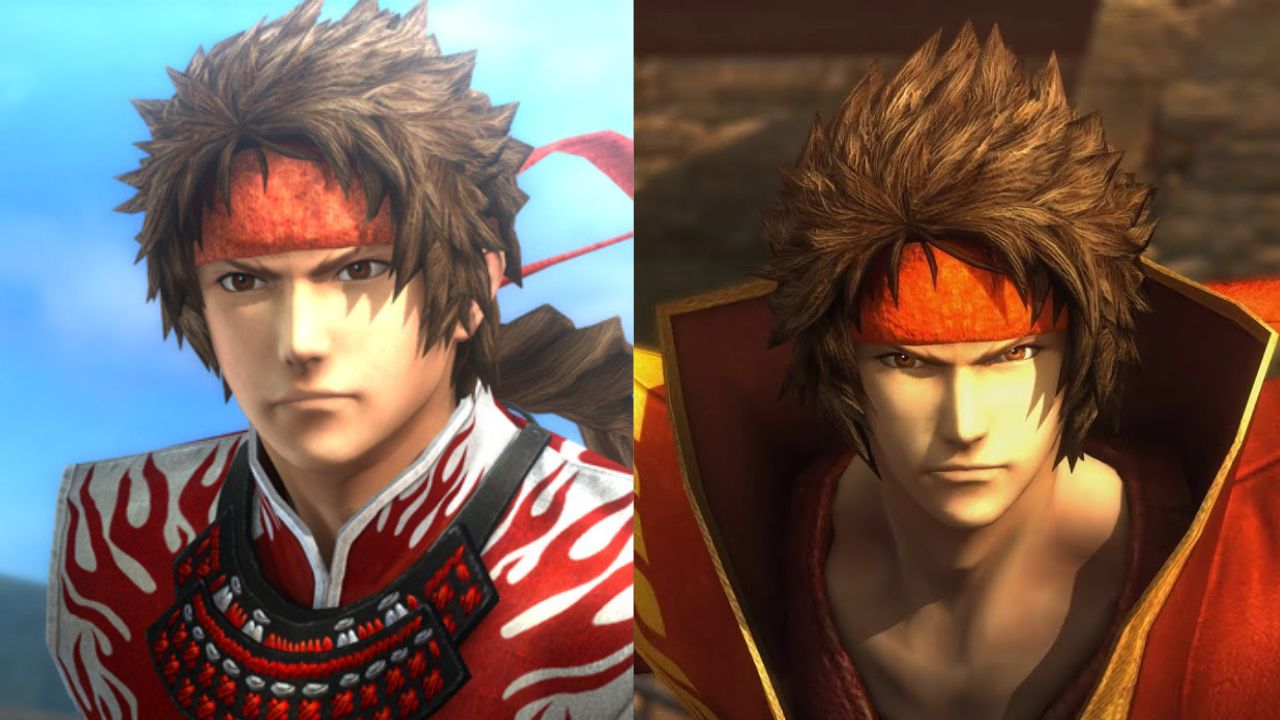
In a twist on historical events, the story sees these two formidable warriors putting aside their conflicts to combat a powerful Demon King named Owari.
This alliance between former enemies adds an intriguing layer to the plot, blending real historical figures with supernatural elements to create an engaging story.
Sengoku Basara: Samurai Kings aired for one season, comprising twelve episodes. The series was followed by a second season, Sengoku Basara: Samurai Kings II, and a movie titled Sengoku Basara: The Last Party.
More recently, the saga continued with another TV series, Sengoku Basara: End of Judgement, showing the franchise’s lasting appeal and its ability to keep fans invested in its action-packed and historically flavored adventures.
10) Brave 10 Is A Journey Through Japan’s Warring States Era
Brave 10 is set during the Warring States Period in Japan, which spanned much of the 15th and 16th centuries.
The anime captures the feel of this medieval era, though the characters’ clothing has a more modern look.
The main character is Isanami, a young priestess from Izumo who is the sole survivor of a ninja attack on her temple.
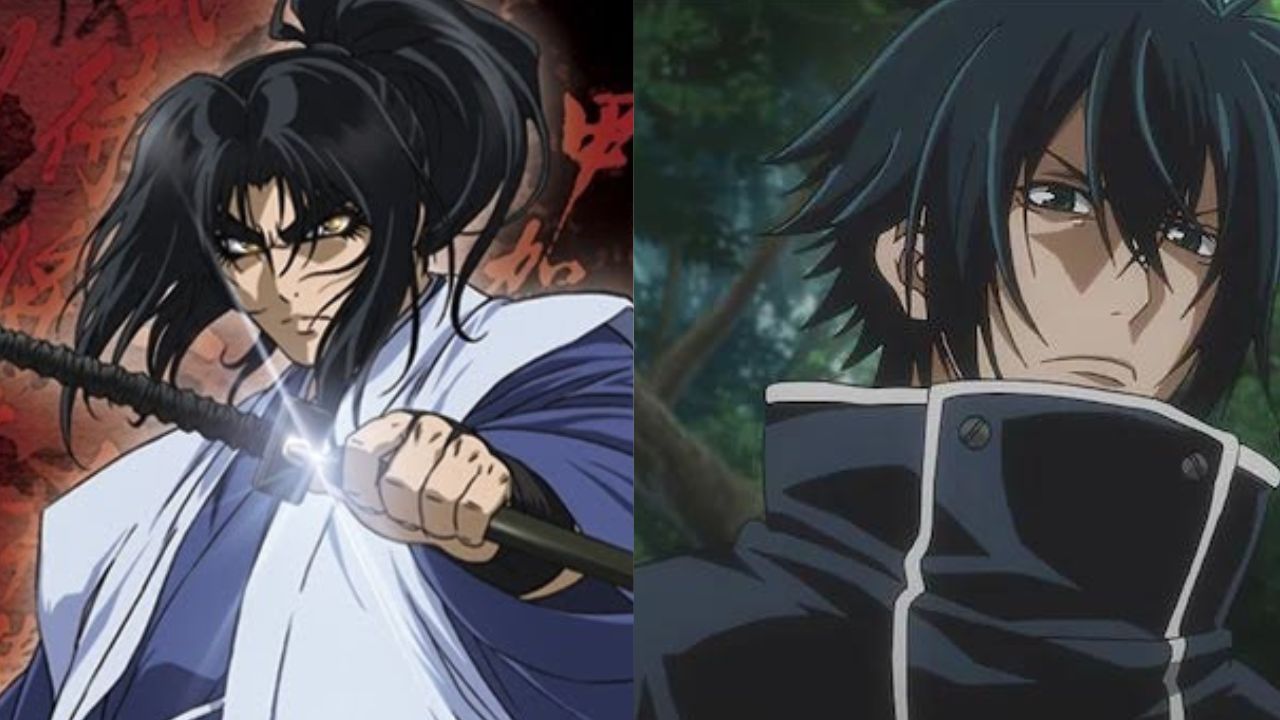
As her temple burns, she escapes into the forest and encounters Saizou Kirigakure, a wandering samurai. Saizou agrees to help her reach Ueda Castle to seek assistance from the local lord.
The series tracks their journey through the unstable and dangerous society of the Warring States Period. It focuses on their adventure as they handles the political and social challenges of the time.
11) Ninja Scroll Is A 90s Anime Classic with a Medieval Twist
Ninja Scroll, released in 1993, is a notable movie that became a key part of the anime scene of the early 90s, alongside famous works like Ghost in the Shell and Neon Genesis Evangelion.
Unlike many anime of its time that focused on cyberpunk themes, Ninja Scroll offered a distinct and richly detailed portrayal of medieval Japan, both in its visual style and musical score.
The film follows Kibagami Jubei, a wandering ronin who goes on a seemingly simple journey across the country.
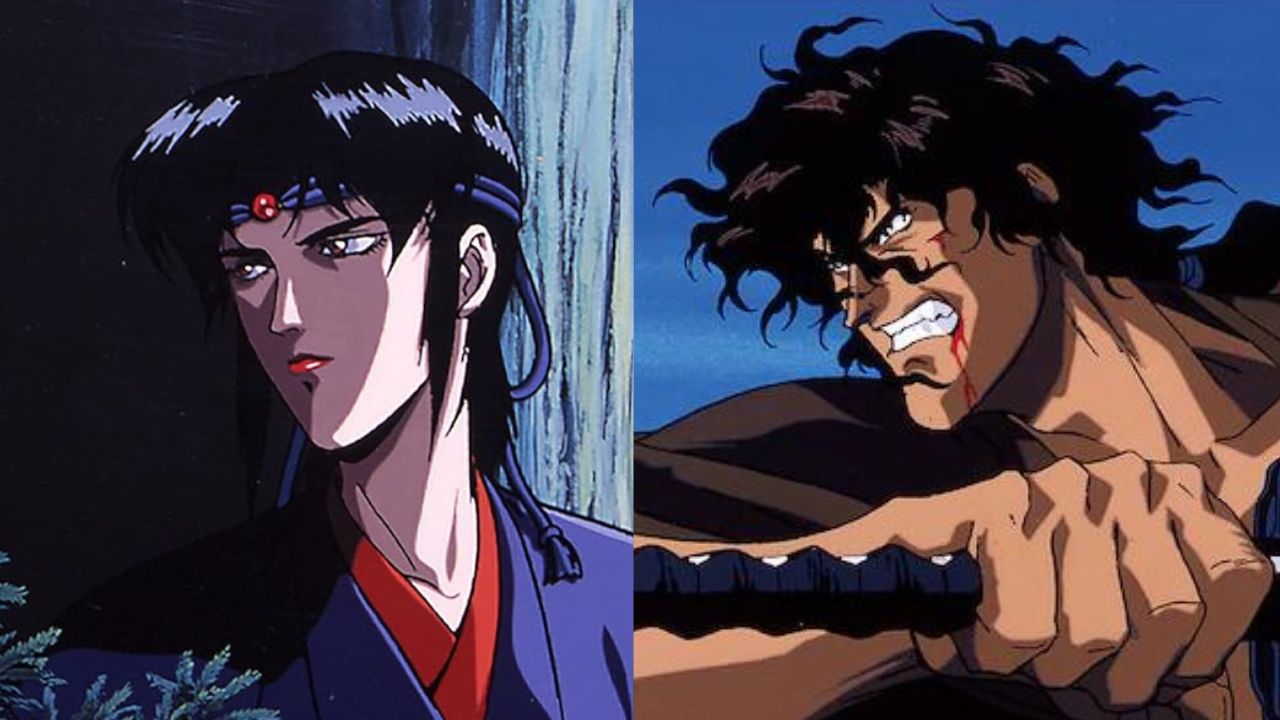
However, his trip turns into a dangerous quest when he encounters the Eight Devils of Kimon, a group of powerful adversaries, and their leader, Genma.
Genma has become the feared Shogun of the Dark and is Jubei’s sworn enemy. Throughout the movie, Jubei faces numerous battles and challenges, all while trying to handles the treacherous world of the Eight Devils.
Ninja Scroll is remembered for its gripping story and its unique blend of historical and mythical elements, making it a standout entry in the anime genre.
12) Samurai 7 Is A Futuristic Twist on Kurosawa’s Classic
The anime Samurai 7 isn’t just named after the classic film Seven Samurai by Akira Kurosawa. Instead of being set in medieval Japan, this series takes place in a futuristic world.
Despite this change in setting, the anime follows a similar story to the original movie. In this futuristic version, the samurai face new challenges, like defending the village of Kanna from cybernetic bandits called the Nobuseri.
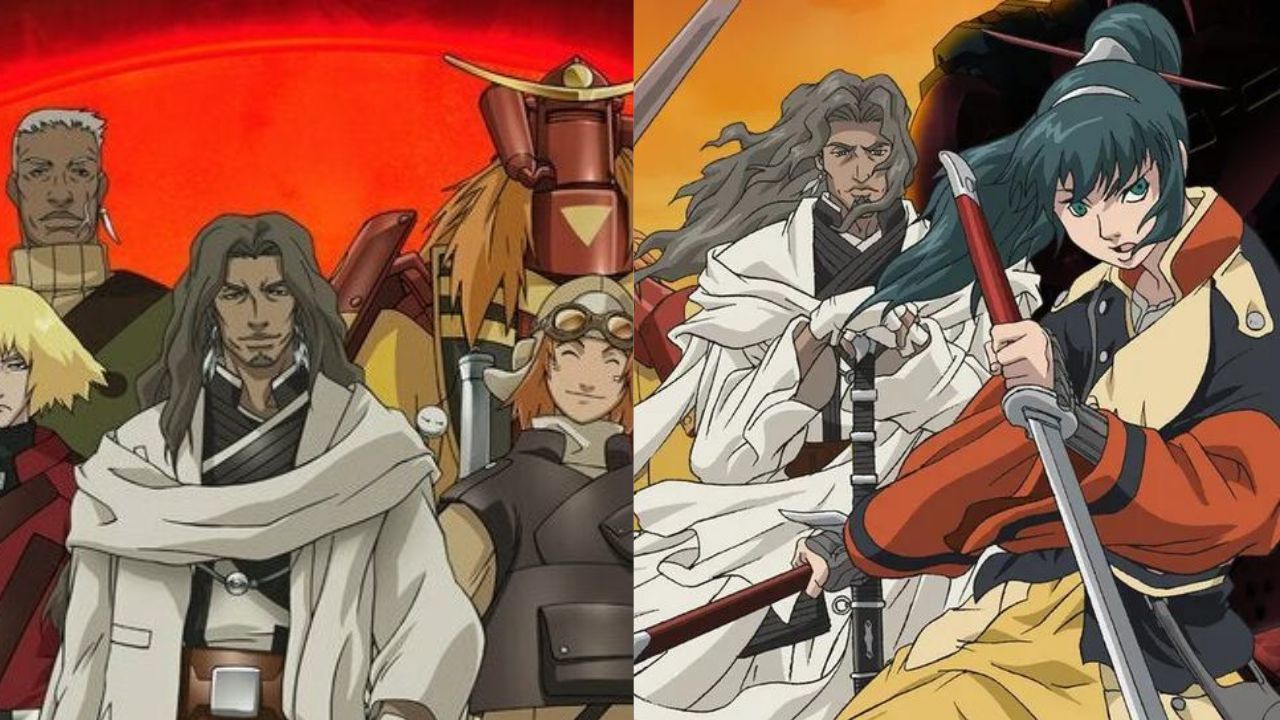
Although the setting and some details are different, the core plot remains true to the movie’s original storyline.
Samurai 7 first aired in 2004 and consists of 26 episodes. It brings the essence of the classic film into a new and unique setting, blending traditional samurai themes with futuristic elements.
13) Shigurui: Death Frenzy Is A Gripping Exploration of Samurai History and Rivals
Shigurui: Death Frenzy is a must-watch for manga fans and those interested in Japanese history. The anime is based on a manga that draws from the first chapter of a novel called Suruga-jo Gozen Jiai, written by Norio Nanjo.
This novel and its adaptations are rooted in true historical events and figures from the samurai era.
The anime focuses on a gripping story of samurai involved in a high-stakes tournament. The competition features real swords and intense personal rivalries that span several decades.

Set in 1629 during the rule of Tokugawa Tadanaga, the story explores the complex and often brutal world of samurai duels.
Produced by Madhouse, a studio known for its high-quality and intricate anime, Shigurui: Death Frenzy stands out for its detailed portrayal of samurai culture and its dramatic storytelling.
The combination of historical accuracy and artistic excellence makes it a compelling watch for those who appreciate deep and nuanced anime.
14) The Elusive Samurai The Prince Who Turned Hiding into Strength
The story of Nige Jouzu no Wakagimi, also known as The Poor Prince, revolves around Tokiyuki Houjou, a young prince who loves to hide from his tutors and retainers.
His life changes dramatically when a coup topples his entire clan, leaving him as the only survivor due to his exceptional hiding skills.
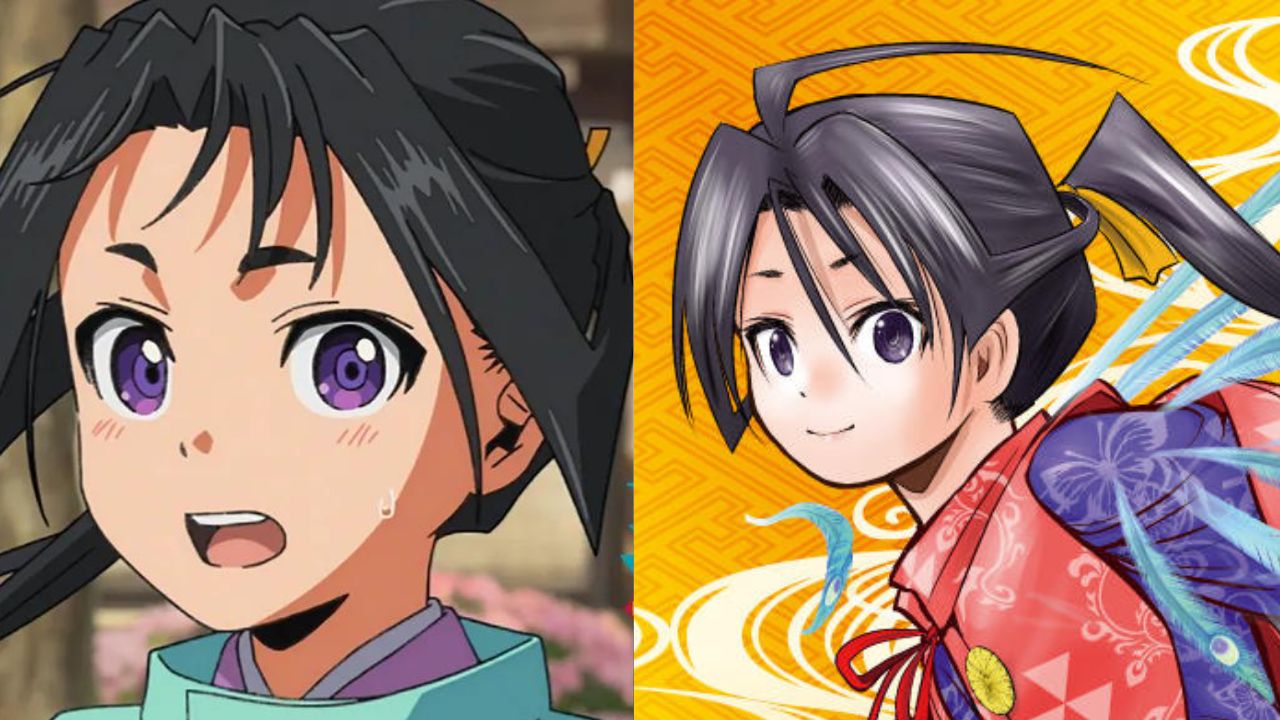
In his grief and despair, Tokiyuki wishes to join his fallen clan in death. However, a chance encounter with a monk sets him on a new path.
He finds himself on a battlefield where he fight to survive and prove his worth. The twist in the story is that Tokiyuki’s skill in hiding, rather than fighting, becomes important to his survival.
As he handles this new reality, he begins to see a way to restore his clan and seek revenge for their downfall.
15) Kurozuka Is A Stunning Blend of Samurai Tradition and Dark Fantasy
The name of this anime, which translates to black mound references a chilling myth about Onibaba, a sinister spirit from Japanese folklore.
Produced by Madhouse, the series stands out for its striking and intense depictions of violence, a hallmark of the studio’s distinctive style.
Set in 12th-century Japan, the story follows a wandering samurai named Kuro. His path changes drastically when he meets a woman named Kuromitsu, who is actually a vampire. Some believe her blood is the key to eternal life.
Things take a dramatic turn when Kuro is betrayed by his servant. After this betrayal, Kuro finds himself in a dystopian future, where he search for Kuromitsu.
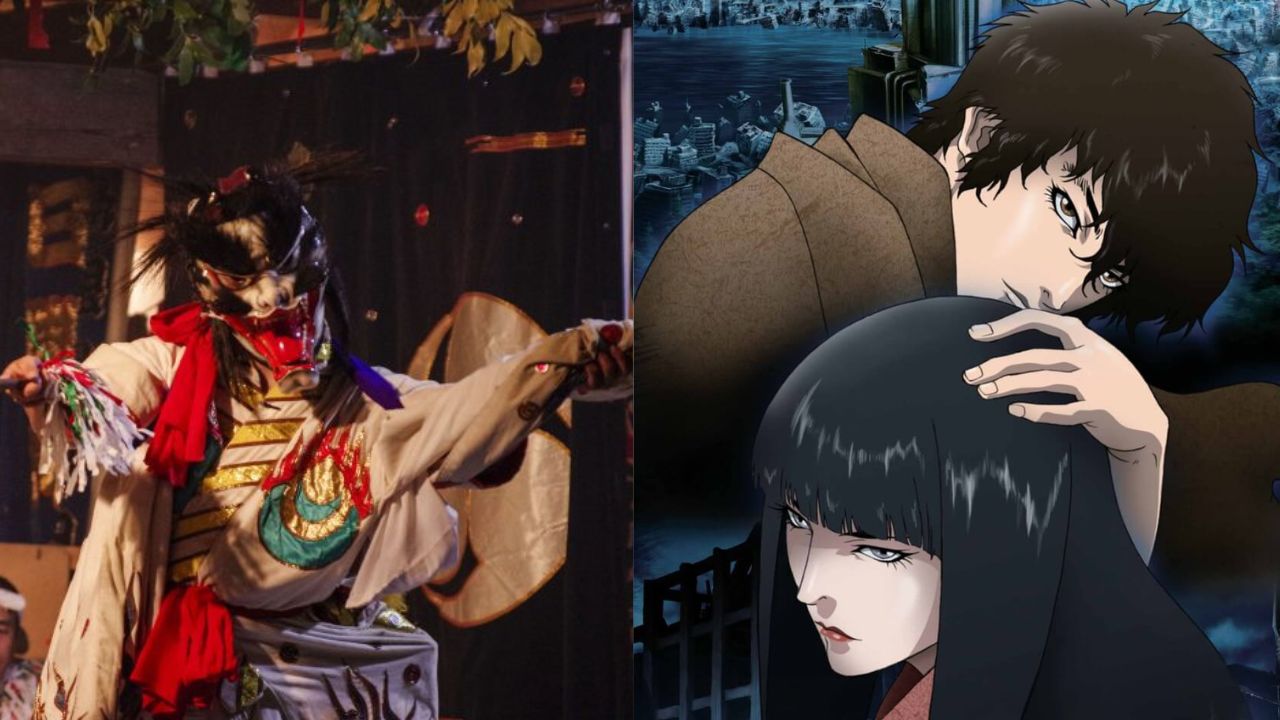
The anime mixes historical and supernatural elements, making for a unique and compelling story.
The series stays true to its manga roots, offering a dramatic and visually striking story. It merges samurai themes with dark fantasy, highlighting Madhouse’s talent for creating intense and visually impactful anime.
16) House of Five Leaves Redefines Samurai Anime with Its Subtle Drama
House of Five Leaves is a standout samurai anime known for its unique art style and intriguing drama. The story centers on Masanosuke Akitsu, a freelance samurai who lacks the fierce spirit typically associated with fighters.
Because of his gentle nature, he’s a ronin, which means he has no master. Akitsu’s life takes a turn when he’s offered a job as a bodyguard by Yaichi, the leader of a group of bandits.
It seems unusual that someone as strong and influential as Yaichi would choose a mild-mannered ronin for such a dangerous job in the criminal world.
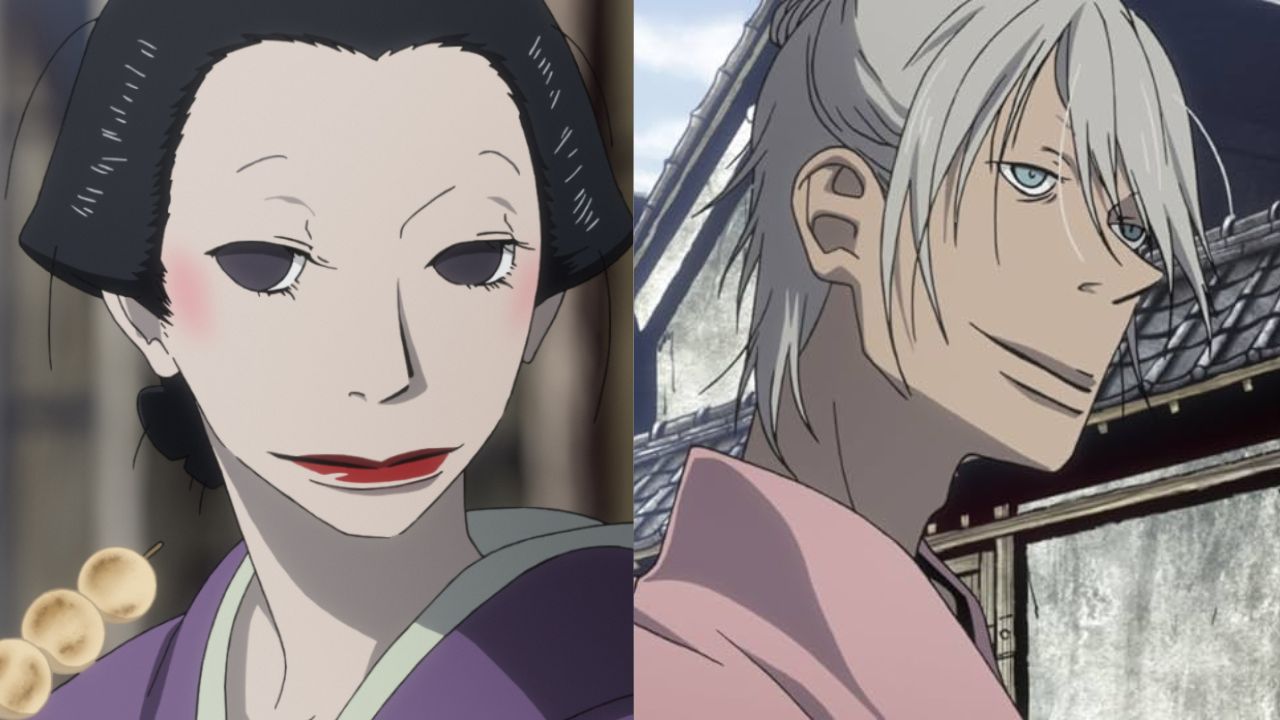
As the story unfolds, it becomes clear that Yaichi’s motivation isn’t about needing protection. Instead, he hired Akitsu out of boredom and a desire for companionship.
This twist adds depth to the plot, revealing that the job was more about filling a personal void than a practical need for security.
17) Mushibugyo Is A Samurai Tale with a Modern Twist
Mushibugyo is a unique anime series with only one season of 26 episodes, even though the manga it’s based on has been popular since 2009.
The story centers around a samurai named Jinbei who battles the Mushi, a group of giant, menacing insects that have been causing trouble for the local people for a hundred years.
The anime combines a historical setting from the Edo Period in Japan with a distinctive and modern animation style.
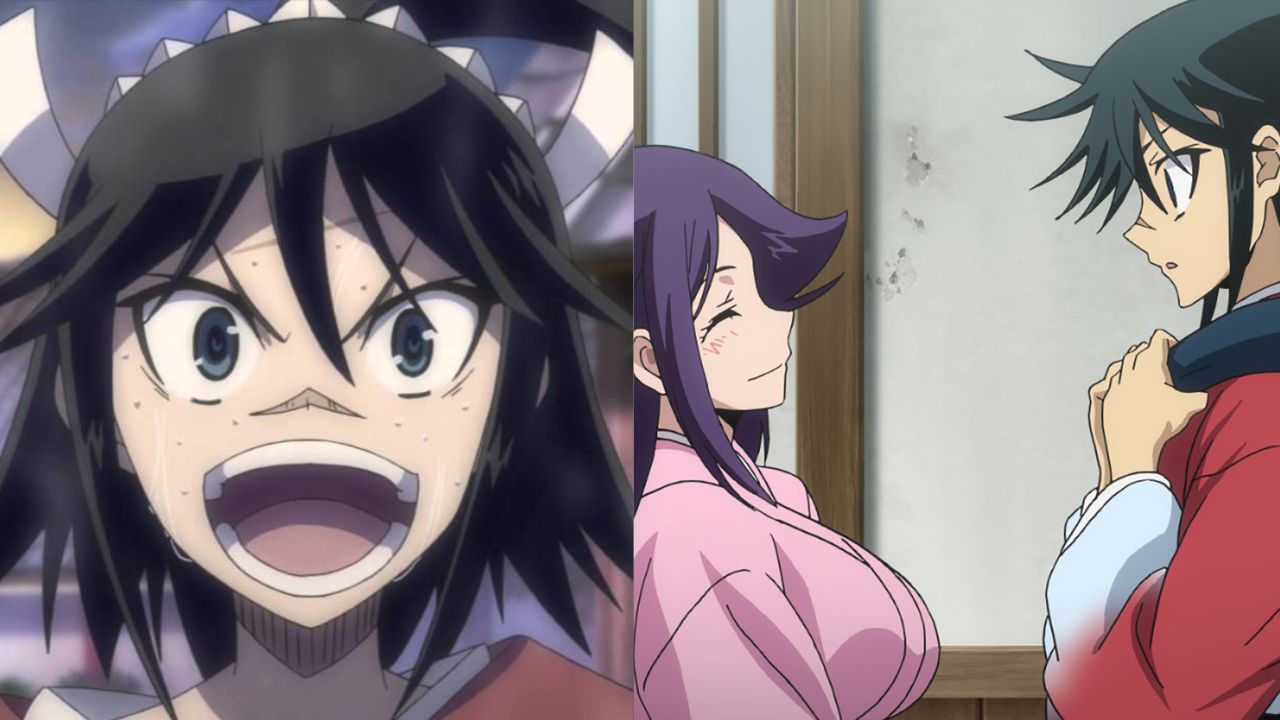
This blend of old and new creates a visually striking anime that stands out from other historical anime.
Fans of experimental anime, such as Redline or The House of Five Leaves, are likely to enjoy Mushibugyo.
It offers a fresh take on the samurai genre by mixing traditional themes with an innovative artistic approach.
18) Blade of the Immortal A Timeless Tale of Samurai and Supernatural Trials
The anime Blade of the Immortal is based on a manga with a strikingly dramatic title, The Inhabitant of Infinity.
The story follows a samurai named Manji who is cursed with immortality and kill 1,000 evil men to become mortal again.
Despite this fantastical curse, the series maintains a strong sense of historical accuracy. The original manga was extensive, running through thirty volumes from 1993 to 2012, making it a significant and lengthy series.
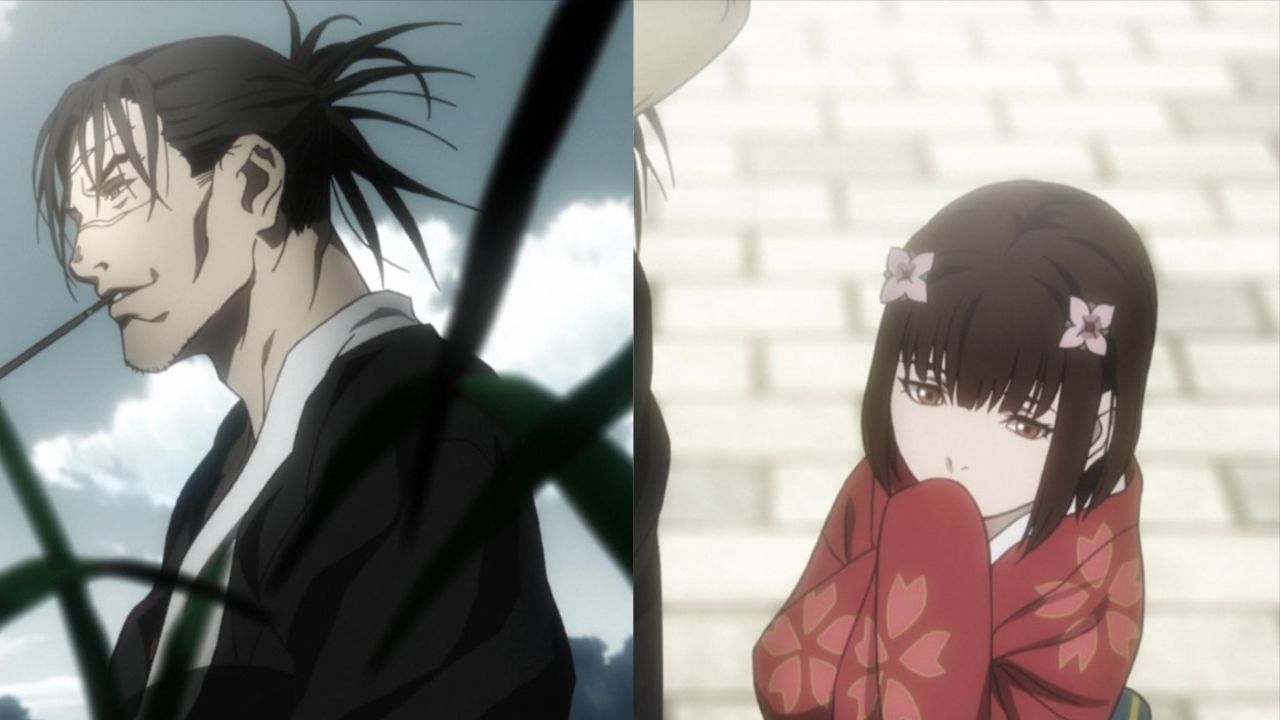
Its impact was such that it inspired a live-action film adaptation in 2017 and a new anime adaptation in 2019, which featured 24 episodes, each lasting 22 minutes.
Both adaptations bring the story to life in different ways, with the anime continuing to explore Manji’s epic journey and the challenges he faces.
The blend of historical detail with a unique supernatural plot has made Blade of the Immortal a memorable and enduring series.
19) Yasuke Where Real History Meets Fantasy in Feudal Japan
Netflix’s anime series Yasuke blends real history with fantasy and sci-fi elements. The show is inspired by the true story of Yasuke, an African warrior who became a samurai in 16th-century Japan.
Yasuke’s life has influenced other anime like Afro-Samurai, but this series adds a fantastical twist to his story.
In the series, Yasuke arrives in Japan with Jesuit missionaries and becomes a samurai serving Lord Oda Nobunaga.
After Nobunaga is defeated by the Dark General, Yasuke finds himself as a ronin, a masterless samurai.
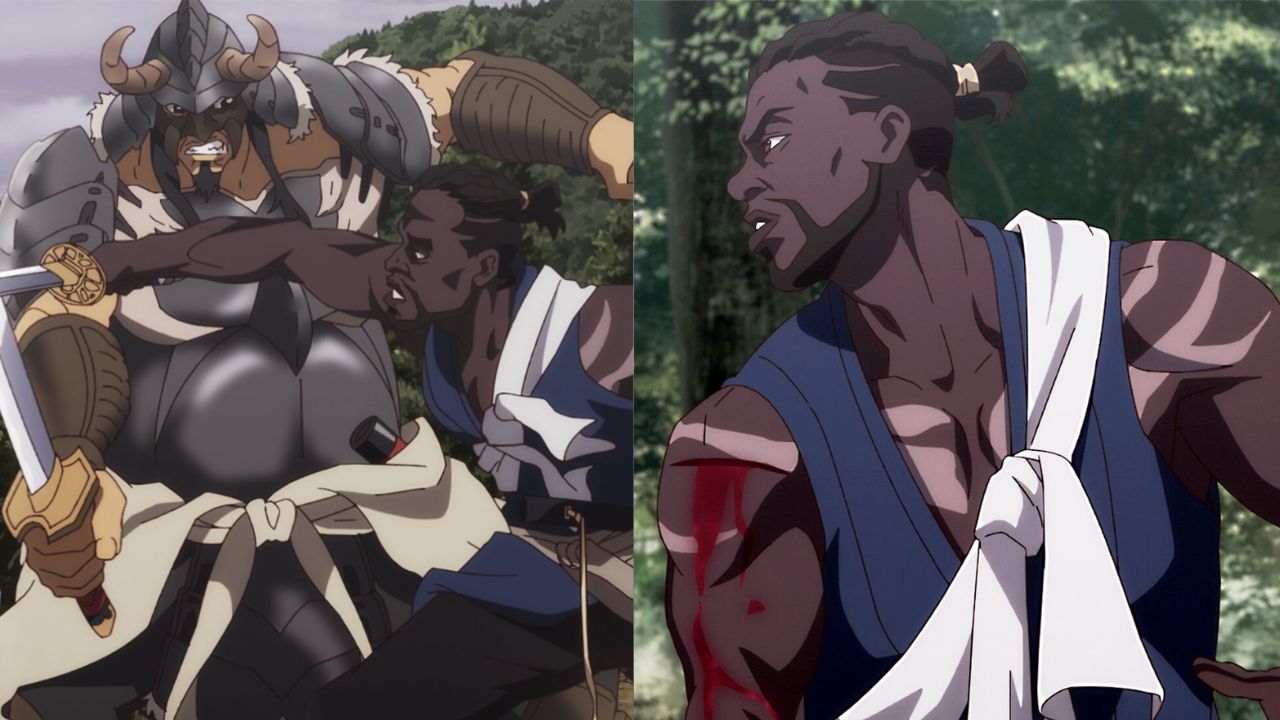
This part of Yasuke’s story is based on historical facts, as much as current research knows.
The series takes a turn 20 years later, showing Yasuke retired and working as a boatman. He ferries people along the river and leads a quiet life.
However, his routine changes when he agrees to transport a singer and her sick child to a doctor in the north.
Yasuke’s simple task becomes complicated when he discovers that the child possesses magical powers.
This twist adds a layer of fantasy to the historical backdrop, blending Yasuke’s real-life story with imaginative elements.
20) Angolmois Is A Raw Look at Japan’s Unlikely Defenders
The anime Angolmois: Record of Mongol Invasion focuses on a group of prisoners who were initially intended to defend Japan from Mongol invaders in 1274.
The story mainly unfolds on Tsushima Island, where most of the action takes place, but it also includes flashbacks to explore the backgrounds of the main characters and explain why they ended up as convicts.
The central character is Kuchii Jinzaburō, a samurai known for his unique sword techniques and strong, controversial beliefs.
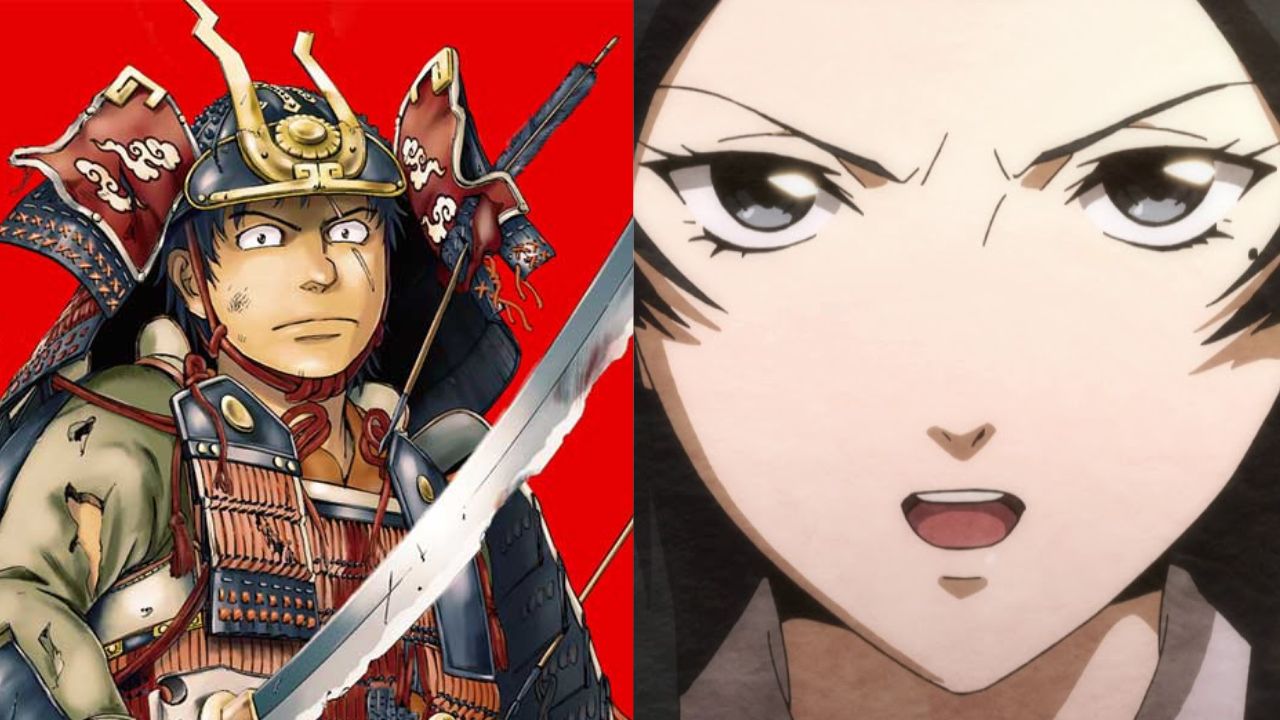
His political views led to his imprisonment. Alongside him are various other characters, including pirates and petty thieves, each with their own stories and reasons for being behind bars.
This anime offers a realistic portrayal of historical Japan, especially the conflicts during the Mongol invasions.
It combines action with historical detail, making it a valuable watch for those interested in this period of history.
21) Peacemaker Kurogane Is A Insightful Exploration of the Shinsengumi and the End of Samurai Rule
Peacemaker Kurogane is a notable anime for those interested in the historical period leading up to the Meiji Restoration, a time when the samurai class was losing its power and influence in Japan.
The series offers a detailed portrayal of this transformative era, focusing on the political and social upheavals that marked the end of the samurai’s dominance.
The story centers on Tetsuonosuke Tetsu Ichimura, a young man who joins the Shinsengumi, a prominent warrior group that fought against the changes brought by the Meiji Restoration.
Tetsu’s motivation for joining the Shinsengumi is deeply personal; he seeks to avenge the death of his parents, who were victims of the unrest and violence of the times.
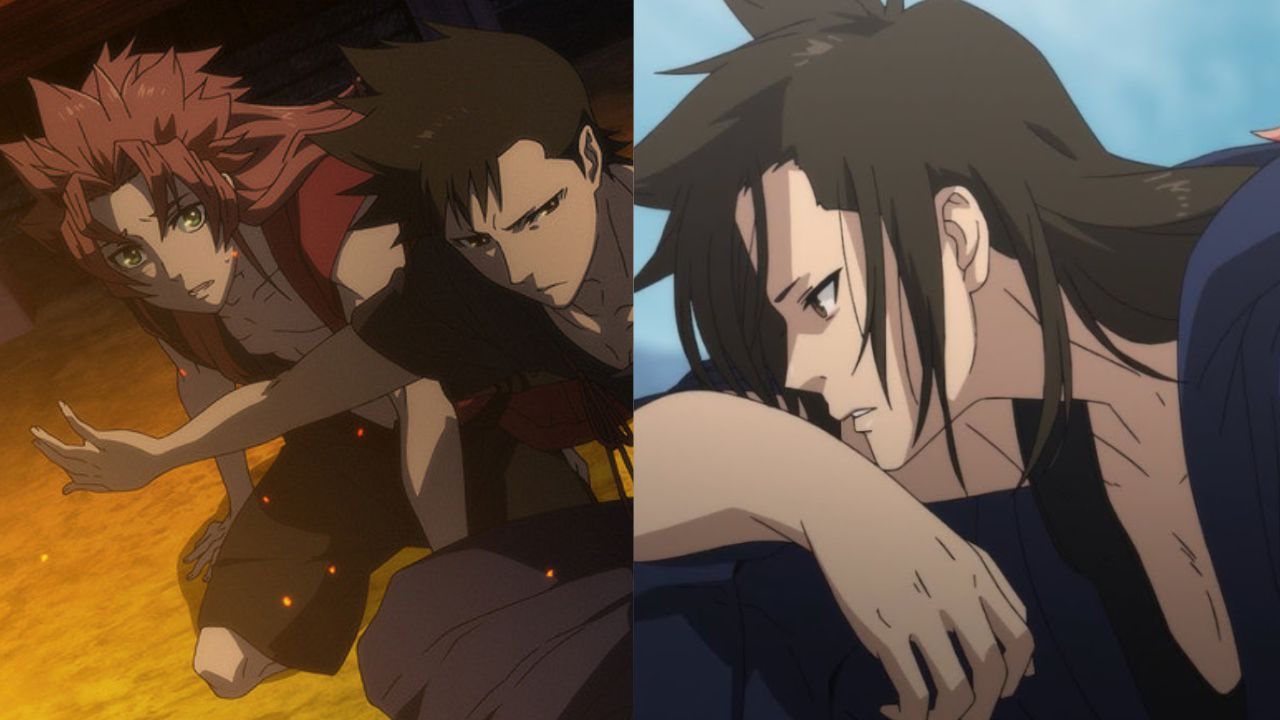
Peacemaker Kurogane is often appreciated as a fresh take on the Meiji era, offering an alternative to other well-known anime set in the same period, such as Rurouni Kenshin.
The anime stands out for its dynamic action sequences and its portrayal of the Shinsengumi, a group frequently referenced in various samurai-themed media.
The series is fondly remembered for its detailed depiction of the Shinsengumi’s role during this turbulent time, enriching the viewer’s understanding of their historical significance.
Its success has made it a compelling choice for fans of historical samurai stories and those interested in the complexities of Japan’s transition from feudalism to modernity.
22) Samurai Deeper Kyou Is A Bounty Hunter’s Pursuit in a World of Demons and Intrigue
In the Edo period of Japan, a bounty hunter named Shiina Yuya is on a mission to find the killer of her brother. During her search, she meets Mibu Kyoshiro, a wandering medicine seller.
Kyoshiro is more than he seems, as he is also sharing his body with a powerful samurai demon known as Demon Eyes Kyo. Kyo’s main goal is to return to his original body.
The journey of Yuya, Kyoshiro, and Kyo leads them into conflicts with major forces of the time.
They face challenges from the Tokugawa shogunate, who rule Japan, and the Mibu tribe, a secretive group of superhumans who have secretly controlled Japan for centuries.
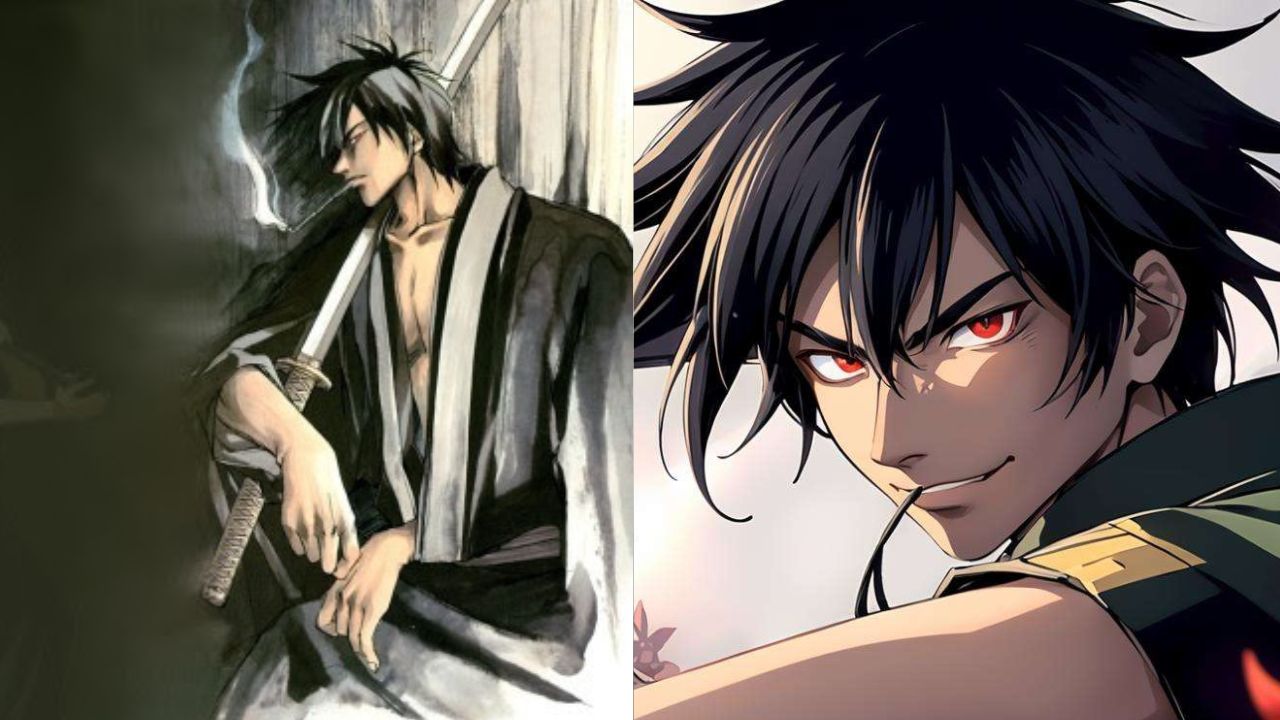
In the series Samurai Deeper Kyou, we see how Kyo and Kyoshiro, who are bound together, deal with their intertwined fates and dark pasts.
As they travel and fight, they uncover secrets and face numerous dangers, all while trying to resolve their personal conflicts and find their place in a tumultuous world.
23) Hyouge Mono Rewrites Samurai Tradition
Hyouge Mono is a great choice for fans who enjoy samurai anime with a focus on historical accuracy.
Unlike many other series, it prioritizes politics and personal growth over constant action, though it does include some impressive action scenes.
The story is set during the Sengoku period, a time of intense civil war in Japan. The main character, Furuta Sasuke, is a warlord who might be expected to spend his time on the battlefield.

However, Furuta becomes fascinated with the art of the tea ceremony. His new interest leads him to question his role in life and his choices during this tumultuous period.
The anime explores his journey of self-discovery amid the chaos of war.
24) Ōoku: The Inner Chambers Transforms Samurai History with Women Leaders
The Tokugawa Shogunate was a powerful samurai family that ruled Japan from the 16th to the 19th century.
In Ōoku: The Inner Chambers, the anime imagines what would have happened if this influential family had been led by women instead of men.
This twist changes the focus from the usual battles to a rich story of political and historical drama, exploring how samurai rule might have looked under female leadership.
In this alternate history, men still train as samurai, but women become the main heirs to the family because a plague has killed most of the men.
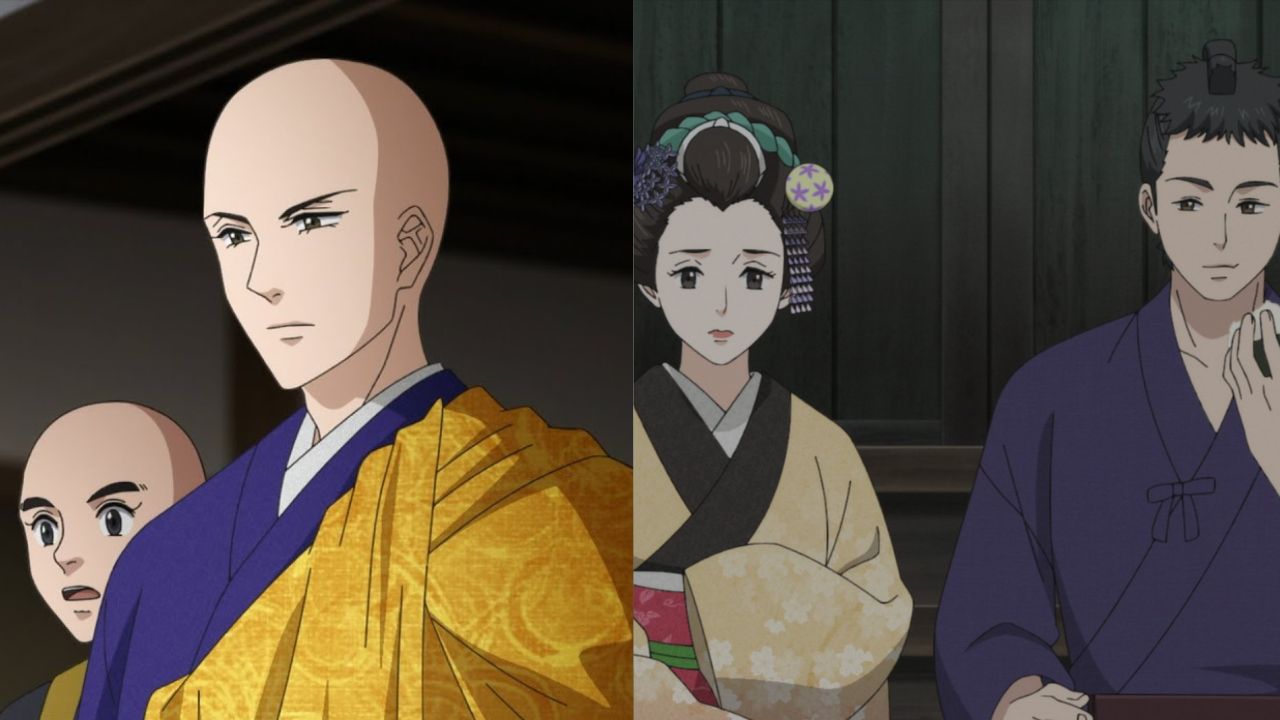
The women take on traditional male names and sometimes wear ceremonial clothing similar to samurai or military attire, mixing historical elements with imaginative ideas.
This creates an interesting new dynamic in the story. Although the anime includes mystery, romance, and intrigue, it is mainly classified as science fiction.
It provides a fresh take on how the samurai class and their traditions could have evolved in a world ruled by women, offering a unique perspective on both historical and fictional storytelling.
25) Onimusha Is A Fresh Take on Japan’s Historic Legends
Onimusha, a Netflix animated series produced by the Japanese studio Sublimation, brings to life the story of the popular video game series of the same name.
The anime mixes real historical figures and events from Japan’s Edo Period with its fictional elements, staying true to the games’ historical setting.
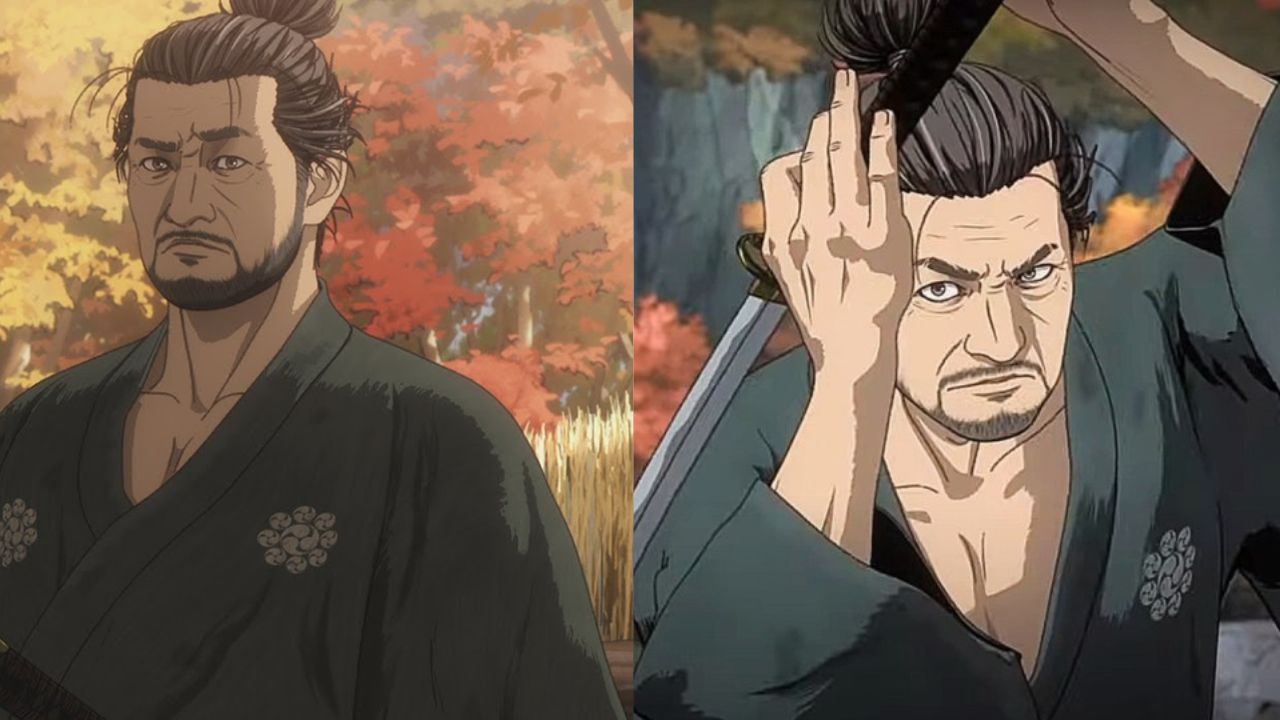
The series centers around a skilled swordsman named Miyamoto Musashi. Musashi wields a special weapon called the Oni Gauntlet, which is key to the series’ title and plot.
The animation and storytelling are handled by Sublimation, while Netflix manages the distribution.
The anime blends historical facts with fantasy, offering an exciting adventure based on Japan’s rich past.
26) Kenyuu Densetsu Yaiba Is A Shonen Treasure
Brave Sword Legend Yaiba is a classic anime series from 1993 that didn’t get much attention at the time due to issues with localization.
The anime was based on a manga that was published from 1989 to 1994. The story follows Yaiba, a young samurai who lives in the wilderness with his father.
Their peaceful life changes when an unfortunate run-in with local wildlife forces them to move to the city.

In the city, Yaiba’s exceptional sword skills make him a local hero. The anime is a shonen series and is praised for being one of the best samurai anime for kids.
It offers an entertaining and historical look at the life of a young samurai, combining adventure with classic samurai themes.
27) Hidamari no Ki Is A Rich Tale of Historical Conflict and Romance
The story is set in Japan just before the Meiji Restoration in 1868, a time of great change and conflict. It follows two young men whose paths cross during this chaotic period.
Dr. Ryoan Tezuka is a medical student who becomes interested in Western medicine, taught by Kōan Ogata. On the other hand, Manjiro Ibuya is a samurai who values tradition and honor.
Both men fall in love with the same woman, O-Seki, who is the daughter of a respected temple priest.
As the story progresses, Ryoan’s idealistic views on Western medicine begin to fade. He eventually marries, settles down, and takes over his father’s medical practice.
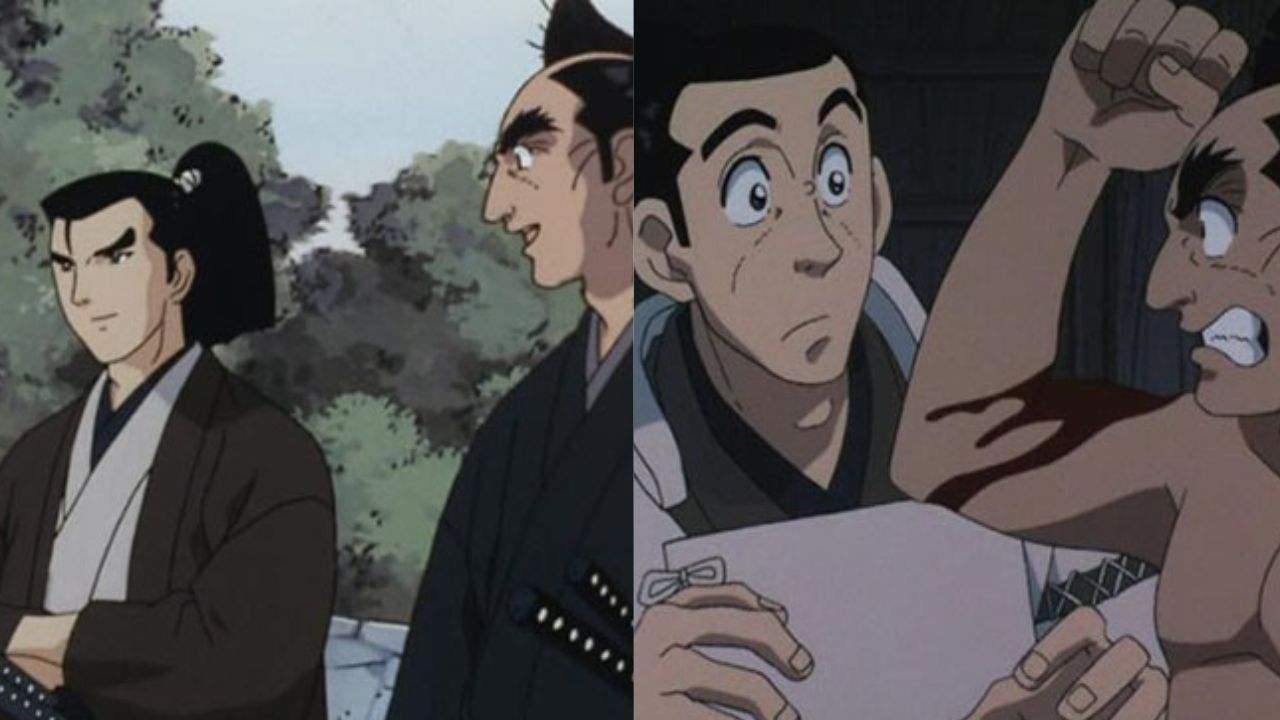
Meanwhile, Manjiro makes his way up through the ranks of samurai society. He is initially tasked with handling a U.S. emissary and later with transforming farmers into soldiers.
The manga, known in English as A Tree In The Sun, originally came out in the 1980s and was adapted into an anime series in 2000.
It is praised for its accurate portrayal of Japanese history, focusing on the clothing, architecture, and daily life of the era without adding any fantasy elements.
The creator, Osamu Tezuka, based part of the story on his great-grandfather’s experiences with Western medicine and the societal backlash he faced.
Memes of the Day
Dear Mother Clara
Love Maid -Yasashikute Amaama na Kyonyuu Ero Maid San to *EX Shimakuru Ohanashi-
Jimi dakedo Eroi Karada Shita Okaa-san o Fuuzoku Ochi Sunzen de Sukutta Boshi Soukan
Keitai de Muchimuchi na Chounyuu JD ni Chinpo o Shigoki Agete Morau Hanashi
Thai Mother Hole
Jogakkou de Otoko Hitori na node Kousoku de Seiyoku no Hakeguchi ni Sareru Nichijou 2-Jigenme
Ubu de Otokogi no Aru Ladies’ Souchou o Yamaoku de Tasuketara

